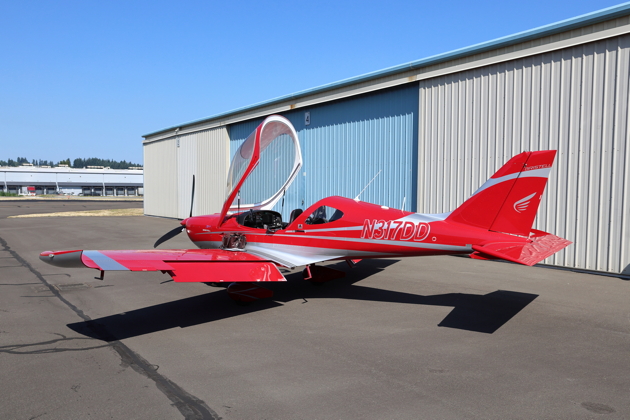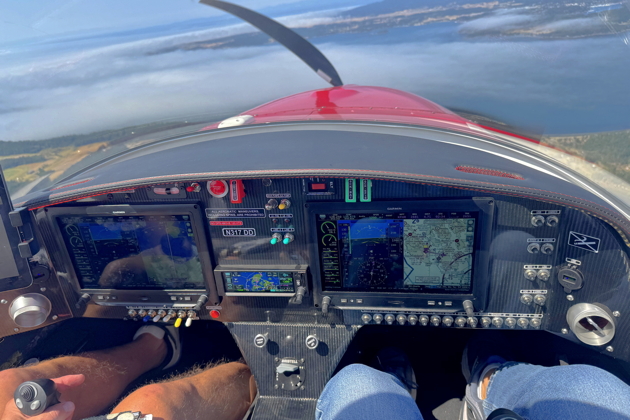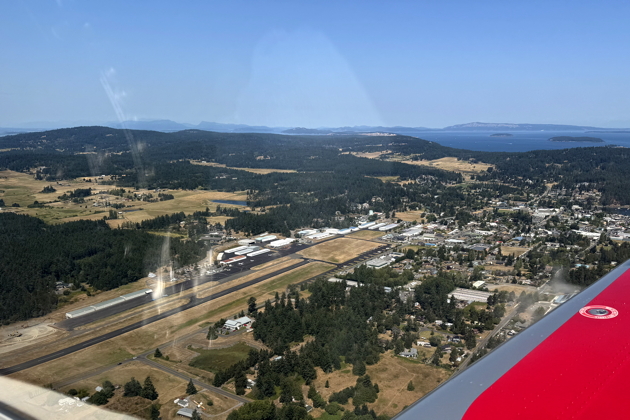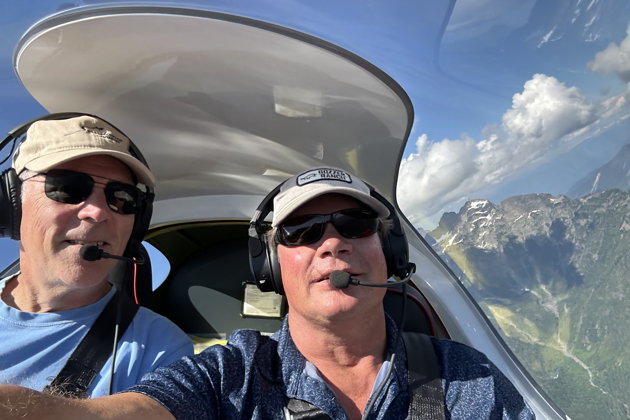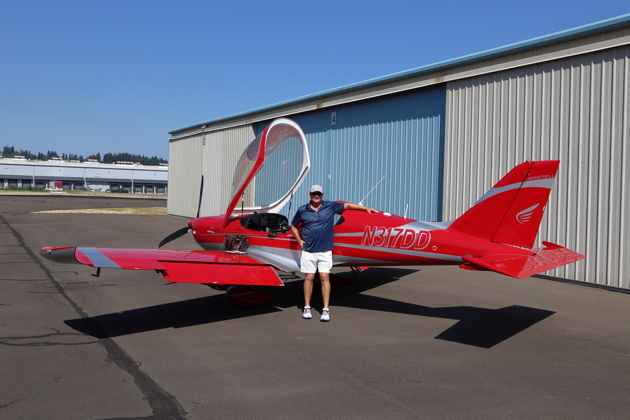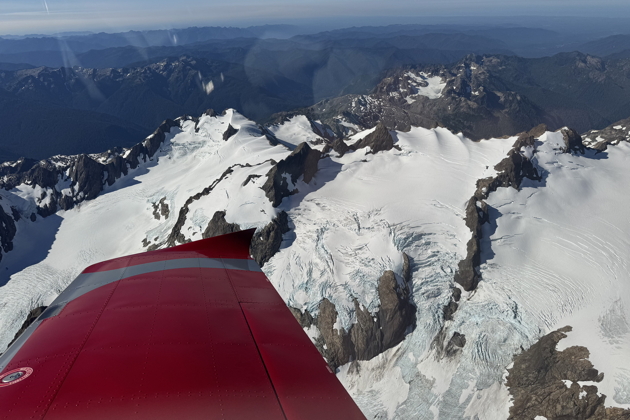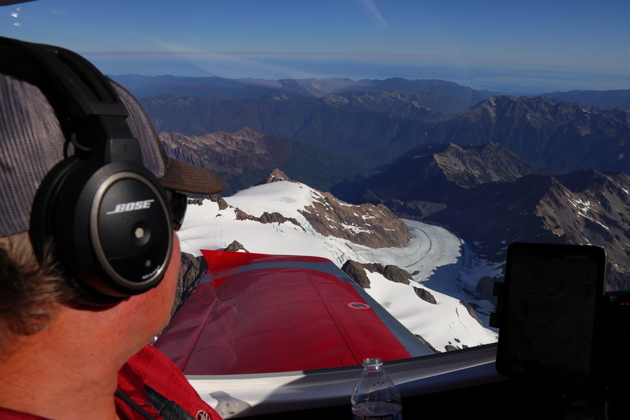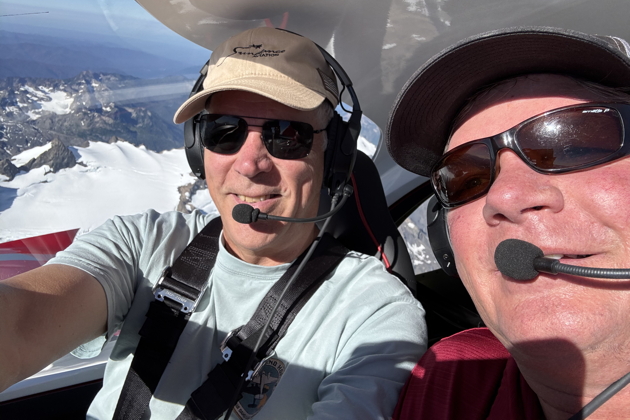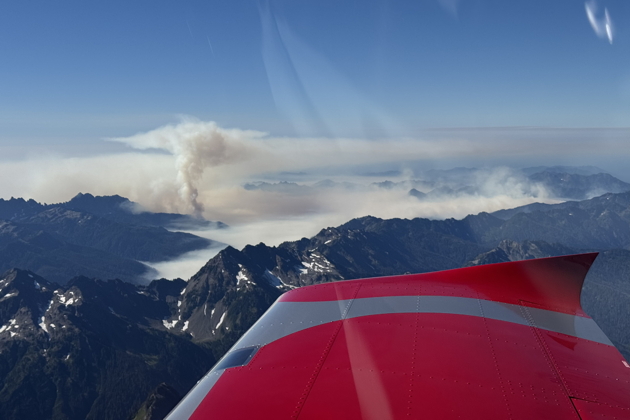FlightLog Archive
∟Aircraft Flown
Flying the Bristell 915 LSA - Jul-Aug 2025
I had just refueled my Warrior at the Auburn airport fuel pumps, and a gorgeous low-wing Bristell taxied in to also refuel. I walked over to talk to the pilot, and met Devin Dufenhorst, who was taking a friend up for his first flight. I noticed that the Bristell was powered by the new Rotax 915iS turbo engine, and got some background and an offer for some Bristell flight time on a future flight, since Devin was now based at the Auburn airport. The following week Devin contacted me, and I mentioned that a flight up to Friday Harbor would be a great way to checkout the Bristell and also get some good seafood.
Built in the Czech Republic by BRM Aero, the Bristell 915 has a roomy 51-inch wide interior and a huge canopy that folds forward, can be opened and closed easily with a single latch, and has a molded top section to block the direct overhead sun. Visibility is outstanding! The Bristell has mostly aluminum construction, with the cowling, rudder and cockpit panel made of carbon fiber. It has adjustable rudder pedals providing good steering on the ground, but I found out that the rudder pedal adjust handle allows for mis-matched rudder placement if they are not both moved in or out together, but can be easily re-set on the ground or in the air.
The Bristell holds 31.87 gallons of fuel, with 30 usable, and can be flown with either 100LL avgas or 90 octane auto fuel. The primary limiting factor for full employment of the Bristell is due to current LSA aircraft rules, limiting the maximum gross weight to 1320 pounds. With an empty weight of 860 pounds, the useful load is only 460 pounds. With two large occupants, fuel must be managed carefully to stay under max gross weight. With the new MOSAIC/Sport Pilot 2.0 LSA rules, which take effect in July 2026, the weight limitation is removed. In its place is a new set of rules, with the primary limitation for the aircraft now being a maximum landing configuration stall speed (Vso) of 61 knots calibrated airspeed, which the Bristell easily achieves at 43 KCAS. Good news for Devin and his Bristell, since European certified Bristells are already flying with a 750KG/1650 pound max gross weight.
I'm more comfortable flying in the right seat of most aircraft, with the throttle in my left hand and stick or yoke in the right. The Bristell 915 engine is conveniently controlled with a single power lever, with no mixture or prop control required. The Rotax 915iS started easily with the characteristic clatter on start, then settled to a smooth RPM. Taxiing out, the hand brake was sensitive but easy to learn. The hand brake conveniently locks in place as a parking brake or when you are ready to do a run up. The steerable nose wheel is a plus over a castering nose wheels found in many LSAs.
Once applying takeoff power, Devin and I rapidly accelerated and climbed at a very steep deck angle at well over 1000 FPM, even pitching below the Vx and Vy climb angles for a better view over the nose. The Rotax 915 performance really shines with the light weight and clean aerodynamic design of the Bristell. We climbed quickly to our cruising altitude, and proceeded to the north, passing Harvey Field and Skagit, then cruised through Whidbey's airspace direct to Friday Harbor. Devin flew the first landing, and demonstrated a slip to get down to the visual glideslope, keeping in just a bit of power in the flare. Seafood at Downrigger's was excellent, as always.
I flew the takeoff on the return flight, again enjoying the impressive climb angle on departure. We cruised low level around the San Juan islands, enjoying the outstanding visibility, then I pushed up the power for another impressive climb, swiftly getting to 6500 feet for close up views of Three Fingers mountain and the glorious terrain of the local Cascade Mountains. On our return to Auburn, I checked out the maneuvering capability, enjoying the light stick forces and crisp flight control responsiveness. While slowing, I noted that the Bristell does not have a stall warning horn, and will check out the approach to stall and stall feel on a subsequent flight.
We flew the right pattern to land on runway 17 at Auburn, with another smooth touchdown. I'm looking forward to more flights in the Bristell, checking out the IFR capability with the G3X and GNX 375 combo, and experiencing again the Rotax 915's climb and efficient cruise capability. Thanks for the Bristell introduction, Devin!
Epilog
Devin and I flew the Bristell again for some mountain flying experience, cruising to Mt. Olympus and again enjoying the impressive climb capability while easily circling Mt. Olympus for great views of the mountain and glaciers. The Blue Glacier was very impressive on the northeast flank of the mountain, along with eerie views of the massive Bear Gulch Fire northwest of Shelton, WA. Descending back to Auburn, we flew close to the amazing rock face of The Brothers, while enjoying the smooth maneuvering capability of the Bristell.
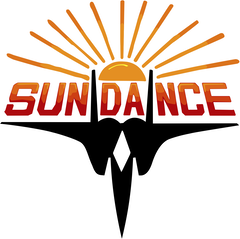 KASPRZYK
KASPRZYK